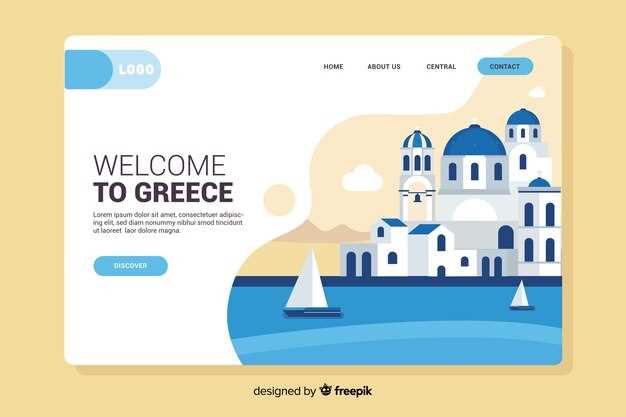Start with a week-long charter that prioritizes balanced routing, dependable crews, and flexible port calls along Mallorca, Ibiza, Corsica, Sardinia, and the Ligurian coast. Choose a vessel with steady schedules, clear provisioning plans, and a crew that communicates openly to adapt to weather and local conditions.
Ensure your charter includes a seasoned captain and a first mate ready to manage tender operations, dinghy transfers, and docking at historic marinas. Request recent inspection records and visible maintenance logs to confirm reliability on day trips between anchorages and remote coves.
Plan daily cruising segments of 25–60 nautical miles with 4–6 hours of sailing, allowing time for snorkeling, shore visits, and relaxed meals. This pacing helps you avoid fatigue and keep the crew attentive to safety and guest comfort.
Prioritize weather-aware itineraries and flexible stop options to maximize daylight and reduce rough seas exposure. Coordinate with the captain to adjust routes in response to sea state and wind forecasts, using reliable meteorological data.
Invest in robust connectivity and a dedicated guest briefing at the start of each leg. Stable Wi-Fi, satellite links, and a concise daily plan help guests coordinate shore activities and dining without confusion.
Regulatory checklist for Western Mediterranean charter operations
Recommendation: appoint a local maritime compliance lead and map all permits, certificates, and port clearances for all vessels before the first charter. Only work with recognized authorities to avoid delays and miscommunication with port officers.
Develop a project timeline that covers flag-state registration, class surveys, safety management systems, crew licensing, and medical certificates; assign owners and milestones to keep approvals moving smoothly across ports along the Western Mediterranean.
Coordinate with your architect and the builder to ensure built features meet regulatory limits on hull configuration, ballast, waste treatment, fuel storage, and lifesaving equipment. Align layouts with inspection checklists and retrofit plans so changes stay compliant during refits.
Crew and guests: confirm licenses, certificates, and medicals; implement pre-boarding screening and enforce passenger numbers per port rules. Keep a strict roster of crew qualifications and refreshers to avoid last-minute gaps before a charter.
Procurement: run various tenders for safety gear, life-saving equipment, and maintenance services; document evaluations and select partners with proven performance and long-term service commitments. Maintain a list of approved vendors for silveryachts components and related systems.
Market and fleet strategy: target the most popular itineraries along the Western Mediterranean and build a multipurpose fleet that can switch between charter formats; ensure glass interiors and flexible layouts deliver comfort with custom options that meet royal guest expectations while meeting safety standards for guests.
Branding and partnerships: collaborate with espen and silveryachts to design compliant interiors and systems, with clear responsibilities for installation, testing, and certification. Require documented commissioning and handed-over material for every enhancement.
Documentation and reporting: maintain a single source of truth for certificates, crew logs, maintenance records, and incident reports; keep digital copies accessible to authorities and complete standard reporting templates during audits.
Audit readiness: schedule port state control readiness checks, prepare crew for inspections, and maintain a live calendar of re-certifications, tender windows, and regulatory updates so operations stay on track across the season.
Berthing capacity, depth, and max yacht size at Porto Mirabello quay
Recommendation: Target yachts up to 60 m length with a beam up to 11.5 m for Porto Mirabello quay; secure a berth well before summer as demand climbs along the mediterranean coast.
- Berthing capacity: The quay provides 14 fixed berths for yachts up to 60 m length, plus 4 flexible slips for midsize yachts. In peak summer the usable capacity along the quay reaches 18–20 yachts, with a scale that supports smooth circulation and fast docking operations.
- Depth: Water depth along the quay ranges from about 5.2 m at mean low water to 7.0 m in deeper pockets, with dredged zones ensuring safe access for large yachts. This setup accommodates 14-meter class vessels comfortably and keeps drafts well clear during typical summer tides.
- Max yacht size: Maximum yacht size is 60 m length, with a beam up to 11.5 m. For sailboats with a wider beam, adjacent slips can be used; 14-meter class yachts fit readily in the mid-range slips.
- Facilities and connectivity: Shore power is available with 400V electric connections; water supply is on site, and the connection allows full onshore charging. The quay features robust bulwarks along the waterline, a shaded sundeck, and lounge areas in the salon zone for guests. The design includes oeino-certified safety checks to ensure reliable operation, and the overall feel is secure and premium.
- Rates and specials: Summer rates are position-dependent, typically ranging from €2,000 to €18,000 per night depending on vessel size and berth location. Long-stay packages and seasonal specials are offered, with tailored quotes available for charter itineraries.
- Location and access: Located along the mediterranean coast near La Spezia, Porto Mirabello quay provides direct ocean access and a protected approach. The wind typically stays favorable for docking, and the quay is fully integrated with marina services to support a seamless guest experience.
Seasonal planning: berth availability, port calls, and weather windows

Lock preferred berth blocks in the Western Mediterranean by late winter for the next season and secure a 6–8 week cancellation window to protect space during July–August, when berth occupancy at Barcelona, Valencia, Marseille, and Palma rises to 85–95% on the main quay.
Berth availability depends on yacht length en beam; for yachts under 40 m, standard quay access in Valencia, Palma, and Marseille handles 38–52 m length and 8–12 m beam; megayachts 60–90 m require dedicated fingers and advance liaison with port authorities; verify gross tonnage limits and tidal windows; reserve mooring slots 6–8 weeks ahead and confirm installation of additional fenders where needed, and check size categories along with other clearance requirements.
Port calls plan: schedule 4–6 stops over 10–14 days to balance provisioning, maintenance, and crew rest. Barcelona 2 days, Palma 2 days, Valencia 1 day, Marseille 2 days, La Spezia 1–2 days, Genoa 1 day, Civitavecchia 1 day. Use landing zones for tenders at protected quay sections and ensure seadoo access for shore excursions where allowed. Coordinate berthing through the marina desk with the yacht management team and the charter bedrijven.
Weather windows: May–September offer the most predictable seas in the western Med, with 3–5 days of settled conditions typical between fronts; plan major moves to align with 48–72 hour forecasts and keep a 2‑day contingency, and more margin during seasonal transitions. Be ready to adjust routes to ride out Mistral pulses in autumn and Tramontane events in winter, using a reputable weather routing service and onboard stabilisers when needed.
Facilities and operations: allocate outdoor spaces for social events and client activities, including a wintergarden lounge and dedicated outdoor decks. Plan charity activities and crew outreach in these spaces, alongside motor tender operations and seadoo retrieval from aft davits. Ensure the shipboard crew area remains fully provisioned and accessible for on‑deck living during peak weeks.
Safety and compliance: monitor covid-19 port requirements and keep vaccination or testing records current; coordinate installation and security checks for any helihanger or helipad usage, ensuring the vessel is ontworpen for such support. Verify that stabilisers are fully functional, confirm quay access and clearance, and maintain liaison with bedrijven offering on‑shore services to streamline next-season planning in yachting contexts.
Guest safety protocols and port call contingency plans
Mandate a pre-port safety briefing 24 hours before arrival with clear muster points, life jackets by the main deck, and evacuation routes along the bulwarks; require guest acknowledgement via the onboard app to confirm their plan. Only trained guests should approach the rail.
Assign a dedicated safety lead from the deck team to coordinate with platform staff, place safety stations on terraces and multipurpose areas, and maintain a special checklist. This plan ensures conditioning of crew, regular drills, and rapid incident response; in case of medical needs, a helicopter can be dispatched via the heli pad with a designated landing approach on the deck and a short path to the main area. Use zone labels like the madra lounge and artemis terrace to guide guests, and map routes for pacific itineraries so guests never crowd the access points.
Maintain a ready reserve of life-saving equipment and potable water; keep reviews after each port call to capture lessons from espen and designers for the next acquisition cycle. Track litres of water and fuel, verify communications between deck, bridge, and platform, and ensure the sports court or multipurpose space can be converted into a medical or shelter area if needed. When weather or port congestion threatens, implement the contingency plan while keeping guests informed, and ensure their comfort by adjusting conditioning and service timing to reduce stress for their experience.
Port call contingency steps
Before docking, confirm the main operational plan with the port agent, test internal communications, and verify all guests in the terraces and deck areas know muster points. If berthing is delayed, shift shore activities to onboard spaces and limit movements near bulwarks; maintain at least 300 litres of potable water on hand and ensure sports equipment remains accessible in multipurpose spaces. If a medical evacuation becomes necessary, coordinate with the helicopter team and keep the landing zone clear on the platform with uninterrupted access to the main deck.
Crew logistics: provisioning, visas, and onshore transport access
Coordinate provisioning and visa processing to align with each port call; lock onshore transport access through a single, port-facing operations desk that directly interfaces with ship-to-shore teams. Build the plan around three windows: provisioning 72 hours before guest arrivals, visas cleared 5–7 days ahead, and shore transfers confirmed 24 hours prior to boarding.
Provisioning strategy uses a twin cycle: local markets for freshness plus norway-based suppliers for long-lasting staples. Maintain a designer catalog of vetted vendors and a wintergarden pantry with premium greens and herbs. Leverage the latest technology to track stock with laser-scanned inventories, and allocate approximately 20 linear meters of refrigerated storage and 8 meters of dry-shelf space. Keep a gran reserve of staples for peak charters, plus more to cover offshore legs. Maintain a small fuel reserve for tenders and outside excursions, and ensure the plan accommodates sailing days surrounded by marina activity and fleet traffic.
Visas and documentation map to crew and guest flows: pre-file with the flag state and port authorities, and keep guest lists ready for fast gangway checks. Coordinate with monaco port authorities for smooth entries during peak periods. Use a Leonardo-grade document system to monitor expiry dates and renewals, and confirm direct lines with consulates for nationality-specific requirements. For nationalities needing transit permits, maintain a backup plan that keeps guests on track without delaying embarkation.
Onshore transport access centers every port call at a fixed pickup point near the marina edge; contract a diverse fleet of vehicles to support guest excursions and crew movements. Ensure shore-side teams sit alongside royal-standard operations, with a clearly published plan that covers outside days, tender deployments, and last-minute changes. Prepare driver lists, route maps, and contingency options for offshore legs, so transfers between sailing legs and tender drops stay efficient while maintaining security and comfort for every guest and explorer onboard.

 Bold for Charter in the Western Mediterranean">
Bold for Charter in the Western Mediterranean">